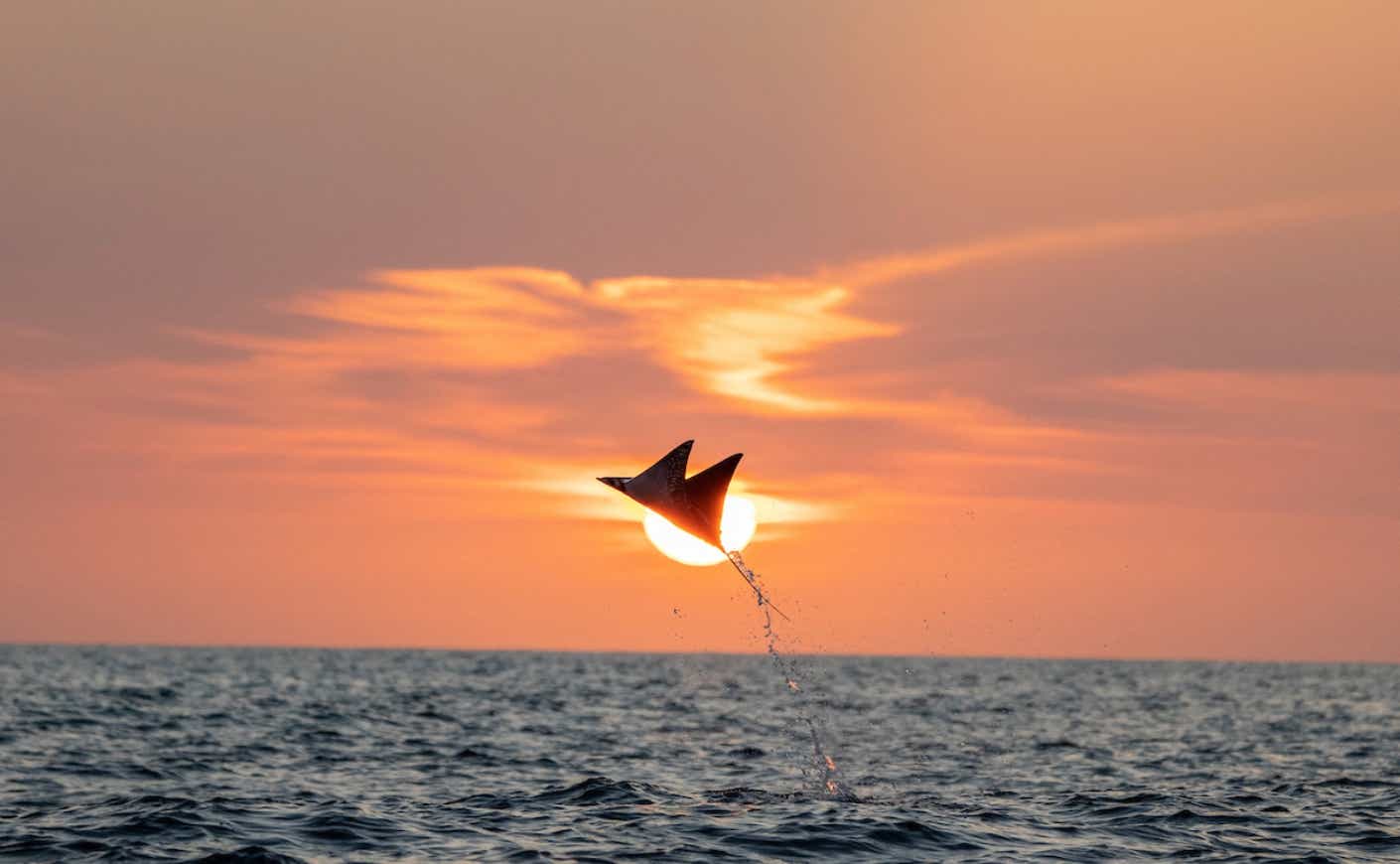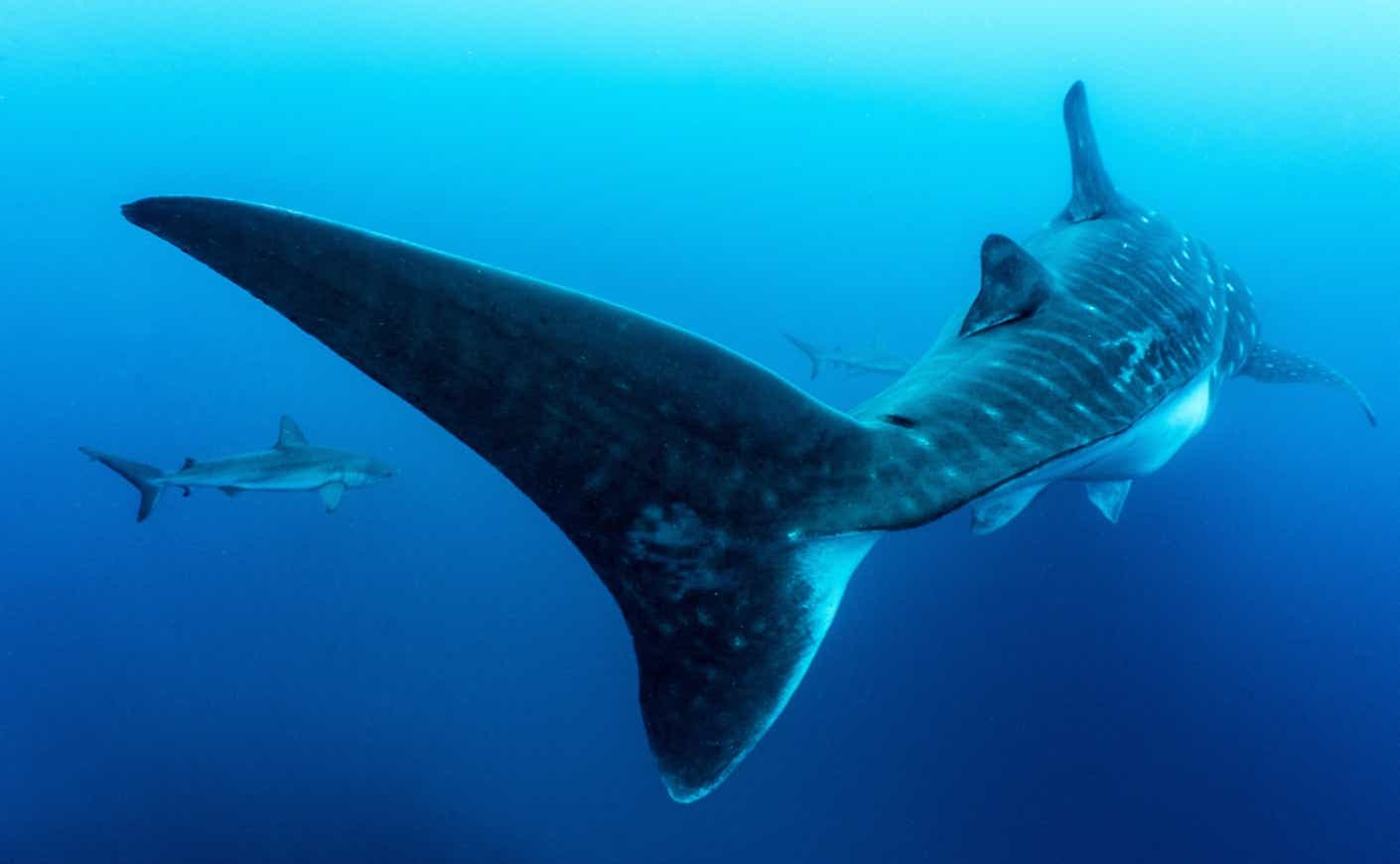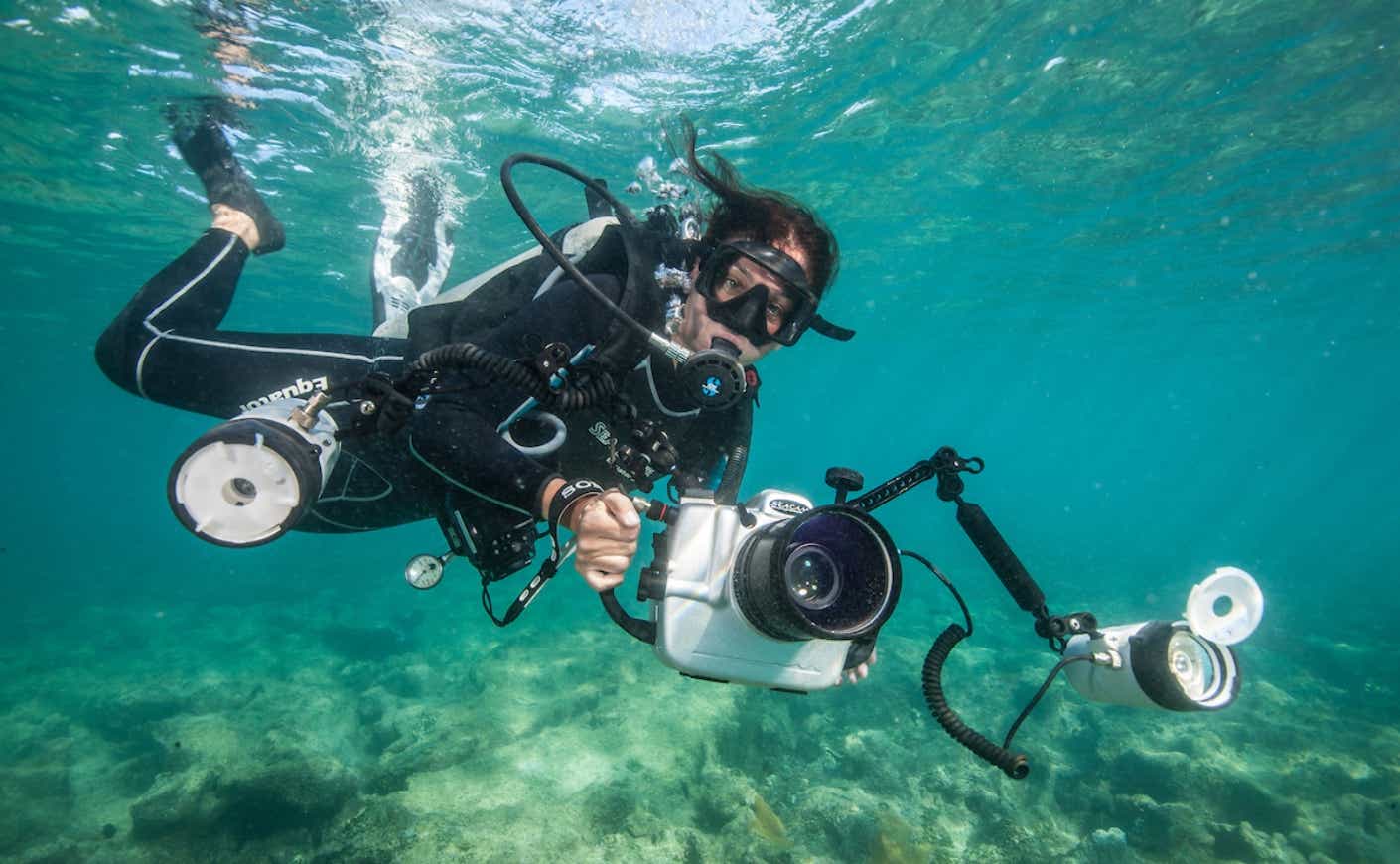I’ve always been fascinated by the natural world, which is what first drew me to marine biology. As I learned more about the challenges facing our oceans and the barriers preventing broader understanding, I turned to photography. It was there that I found myself at the intersection of science, storytelling, and conservation — a place where I’ve spent my entire adult life.
Throughout this journey, as one of a handful of female underwater photographers, I have documented the wonders of our oceans and the stories of the resilient women who protect them. Yet, working at this intersection has meant confronting the challenges of being a woman in a field where we have long been overlooked.
Navigating the uphill battle of being a woman in a space that wasn’t built for us — especially science — has been both a blessing and a curse. I have fought my way into spaces where I was not welcome, defied expectations, and endured the weight of being underestimated. But in doing so, I have found strength in an extraordinary community of women who, like me, refuse to be minimized.

My journey is nothing new. Women have always been at the forefront of science, often with little recognition. One of my heroes, Dr. Rachel Carson, was the first to sound the alarm on the environmental threats of pesticides, and for her efforts, she was called “hysterical.” It turned out she was right. Her work led to the creation of the Environmental Protection Agency in 1970 and the U.S. ban on the pesticide dichloro-diphenyl-trichloroethane (better known as DDT) in 1972. This is just one example in a long line of women whose contributions have been overlooked, stolen, or diminished.
Even today, women in science remain shockingly underrepresented. Globally, women comprise more than half of undergraduate students in biological sciences, yet they represent only about a third of researchers. In senior roles, the numbers drop even further. Nobel Prizes for science have overwhelmingly gone to men, systemic barriers continue to limit women’s careers, and now, Donald Trump is actively seeking to make the situation worse.
President Trump’s executive orders dismantling diversity, equity, and inclusion (DEI) programs have already begun to erase decades of progress. Federal grants supporting women and minorities in STEM are being stripped away. These programs were never about giving women or other underrepresented groups an unfair advantage, but leveling a playing field that was never even to begin with.
But still, we press on. We push against the tide, inspire, and lift each other up.
In the past few months, I have had the privilege of working with extraordinary women leading the way in science, giving me hope for a just and equitable world. My fellow WINGS Women of Discovery awardee, Dr. Dawn Wright, is the first Black person and only the 27th human to have been to the deepest point on Earth, located in the Mariana Trench. She revolutionized oceanography by pioneering geographic information systems (GIS), a technology essential for mapping and understanding our oceans. Dr. Hannah Stewart moved her life to Mo’orea to become Head of Science at the Coral Gardeners. My dear friend Dr. Emma Camp, head of the Future Reefs Program, is working around the clock to figure out the puzzle of coral resilience as reefs around the globe bleach and die from climate change. Dr. Sylvia Earle, founder of Mission Blue, was the first woman to lead the National Oceanographic and Atmospheric Administration. She has spent decades advocating for ocean conservation and education. Ayana Johnson, a marine biologist and policy expert, challenges us to imagine a hopeful future in her book What If We Get It Right? Visions of Climate Futures — a read I highly recommend. And the work of Dr. Frida Lara, the scientific lead at Orgcas, is helping shape a more inclusive, community-driven approach to marine conservation.

In fact, Orgcas — an organization based in Baja California Sur, Mexico — is founded and led entirely by women. Orgcas brings together marine biologists, artists, lawyers, educators, and researchers who share a deep love for the ocean and a commitment to protecting it. Their perspective is one that values inclusivity and collaboration. It’s about elevating others, listening deeply, and incorporating all perspectives to build lasting solutions. I’m proud to serve as one of their advisors.
One of Orgcas’ most ambitious projects is to support the creation of the Dos Mares Biosphere Reserve, a protection I have dreamed of since my days in university. The Baja California Peninsula, a narrow and rugged strip of desert, stretches between two vastly different bodies of water: the Pacific Ocean to the west and the Sea of Cortez to the east. These “Dos Mares,” or two seas, are home to an extraordinary amount of biodiversity, including two-thirds of the world’s cetaceans. Unsurprisingly, this richness has drawn in heavy industrial fishing, depleting once-thriving populations and leaving marine life and coastal communities struggling to coexist.

Their work reminds me of the many women I’ve met along the way, beyond science, and across professions and borders. Women who get up before dawn to sell fish in local markets, who walk miles for clean water, who fight daily battles for their safety and autonomy. Women who, despite unimaginable challenges, rise. I have seen their resilience in remote villages, Indigenous communities, boardrooms, and research stations. I have felt it in the hands that have offered me shelter and solidarity in unfamiliar places. It is an invisible sisterhood that spans cultures and continents.
This is the power of women. Not only do they lead the way in solving the greatest environmental challenges of our time, but they also rewrite the rules, creating space for the next generation of women scientists and conservationists.
On this International Women’s Day, I invite you to join me in celebrating the women (like the unstoppable, superwoman Katie Couric) who have paved the way, the ones fighting today, and the young girls who will lead tomorrow.
Paul Nicklen and Cristina Mittermeier co-founded SeaLegacy in 2014. SeaLegacy’s mission is to inspire people to fall in love with the ocean, amplify a network of changemakers around the world, and catalyze hands-on diplomacy through hopeful, world-class visual storytelling. For more updates on their meaningful work, learn more about SeaLegacy, and subscribe to Ripple Effect, Katie Couric Media’s sustainability newsletter.









